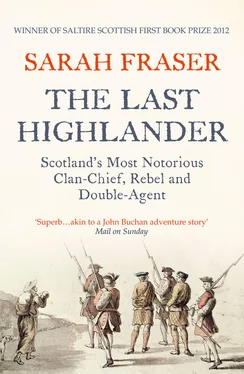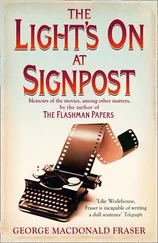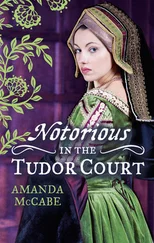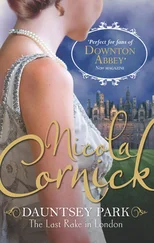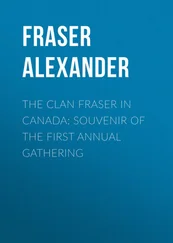Lord Lovat looked about him: ‘God save us! Why should there be such a bustle about taking off an old grey head that can’t get up three steps without two men to support it?’ he asked, shaking off his supporters and going to test the axe for weight and keenness.
It was very nearly time. ‘Then farewell to wicked Lord Lovat, old Lovat,/Then farewell to wicked old Lovat!’ The chorus rose from the ground. The song lumbered along like an old nag beaten up to a canter, thumping out its taunts. ‘Don’t you love it, Lord Lovat, Lord Lovat?’
Codicils to Lovat’s will prescribed his funeral plans in his homeland, hundreds of miles and a civilisation away. ‘All the pipers from John o’Groats to Edinburgh shall play before my corpse and the good old women in my country shall sing a coronach 2 before me. And then there will be crying and clapping of hands, for I am one of the greatest chiefs in the Highlands.’
Taking his time, he hirpled over to consider his coffin. The lid, with his name on it, hung open, a door to take his mutilated body down to the underworld. A brass nameplate announced him, ‘SIMON DOMINUS FRASER DE LOVAT, DECOLLAT, April 9, 1747, AETAT SUAE 80’. He leaned against the rails a moment and murmured a line of Horace: ‘Dulce et decorum est pro patria mori’ (‘It is sweet and seemly to die for one’s country’).
Lovat took in the restless thousands around him, shouting and singing, all fixed on him. In his mind’s eye, he saw his ancestors. From this point on a public scaffold, they moved off from him in a line into the past. They had fought together to make their country independent and free; but Lovat had lived to see that country absorbed into another. He quoted Ovid to himself: ‘Nam genus et proavos et quae non fecimus ipsi Vix ea nostra voca’ (‘For those things which were done either by our fathers or ancestors, and in which we had no share, I can scarcely call my own’).
He knelt down. A kinsman who had helped him ascend to the block knelt near him. They picked up the cloth, a scarlet sheet, to catch his head, and stretched it out between them. The executioner moved his Lordship back a bit. Lovat sat up and the two men spoke. He would bend down, raise his handkerchief and pray, the old aristocrat said. When he dropped the hankie, John Thrift must do it.
Lovat stretched out his short, thick neck as best he could. In under a minute he gave the signal and was launched by the good grace of a single chop. Bonnie Prince Charlie’s ‘late unnatural Rebellion’, the failed second coming of the Jacobite Messiah, thudded a step closer to permanent extinction. The crowd roared.
The style in which Lovat met his nemesis was approved of by supporters and detractors alike. That evening Sir Arthur Forbes wrote to his cousin Duncan, a close friend of Lovat’s, in Inverness. ‘It’s astonishing with what resolution and sang froid Lovat dyed today,’ he reflected. ‘Lovat said he dyed as a Christian, and as a Highland chief should, that is, not in his bed.’
He was born to little of this, however.
PART ONE
Formative Years, c.1670–1702
‘He who pays the piper calls the tune’

ONE
Home, birth, youth, c.1670–94
‘A mighty man of war had been added to the race’
– THE REVD JAMES FRASER ON SIMON’S BIRTH
The future 11th Lord Lovat was born around 1670, some 550 miles north of Tower Hill, in a small manor house in the Aird of Lovat, the hub of the Scottish Highlands. The lack of a recorded date illustrates the initial inconsequence of Simon Fraser’s birth to history.
In Simon’s heyday as Lord Lovat his clan territories extended over 500 square miles of northern Scotland. ‘My country’, as Lovat called it, was bigger than King George II’s Hanoverian homeland. Fraser territories fell into two distinct regions: poor Highland and rich Lowland. The estates reaching over to the west coast and heading south-west from Inverness down Loch Ness, were typically Highland: peaty soil covered in rough grass; rushes and heather rising from wind-whipped moors to stony peaks of over 3,000 feet. Between them sheltered valley floors of startling greenness.
Now almost deserted, in Lovat’s lifetime hundreds of families inhabited these remote fertile glens: the kindred, or ‘family’, of up to 10,000 that was Clan Fraser. Many passed their lives without venturing even once to the regional capital, Inverness – though the young men would pour out of the hills to fight if the chief summoned them with the fiery cross. Visitors from the Lowlands or England in the early eighteenth century regarded the Highlands with appalled distaste. ‘The huge naked rocks, being just above the heath, resemble nothing so much as a scabbed head,’ shuddered an English army officer. The ‘dirty purple’ heather sickened him. Yet the 11th Lord Lovat’s wild hill country produced his most loyal and ferocious fighting clansmen and their lairds, and Lovat returned their devotion with a passion.
The common people’s year followed an ancient pastoral pattern. Their stock was their wealth and security; their economy was based on exchange, with hardly any money being involved. Visiting tinsmiths, tailors or cattle dealers received hospitality and, say, cheese, a hide, or wool in return for their services, news of wars and national crises, folk tales and songs. These Frasers struggled to produce enough to survive the snowbound winters. In their calendar, January was An t-Earrach in Gaelic – the ‘tail’ end of the year, not the beginning. By then the grain chest was empty, the livestock emaciated from a winter indoors with too little to eat and from being bled to provide blood to mix with oatmeal. When the spring grass came the poor animals had to be carried out of the byres.
A clan was divided into branches. At the top was the chiefly family, and the families of his close cousins. Each branch was headed by a laird called after his small estate – such as Fraser of Foyers, Fraser of Gorthleck, Fraser of Castleleathers – and held by tack (lease) or wadset (mortgage). He might be responsible for up to 300 ordinary kinsmen and existed in a state of genteel financial stress. The minor lairds, who managed the Highland parts of the estates, could not make ends meet without the financial support that service to their chief earned them. As a consequence, upcountry men were more old-fashioned than their low-country brethren. Unlike English landowners, clan chiefs such as Lord Lovat kept large bodies of armed men in a state of semi-militarised readiness to protect the clan, and travelled nowhere without a ‘tail’ of up to a hundred of well-accoutred followers on horse and foot. The hill lairds were the first to make up Lord Lovat’s ‘tail’. He loved them above all his clansmen.
The other half of the Fraser chief’s territories was quite different from the hills and glens and was more familiar to foreigners from the south. The area known as the Aird of Lovat, around the mouth of the River Beauly on the east coast of the Scottish Highlands, was first-class agricultural land. This part of the Lovat estates provided nearly all the chief’s income, and the farms and estates here generated more than enough to meet their lairds’ needs. They did not need the extra money earned by traditional service to the chief. The wealthier east-coast lairds might become lawyers, officers in the British Army, politicians in Inverness and Edinburgh, or serve in local government.
Simon’s eastern territory stretched from the Aird, ten miles eastwards along the sheltered Beauly Firth to the eye of the Highlands, Inverness. Here, ambitious men, keen to market intelligence about this vast semi-autonomous region of the Scottish state to the authorities in Edinburgh or London, noted everything that happened. Lovat’s estates lay at a crossroads between the expanding world of Britain and her colonies, and the self-contained world of the clans.
Читать дальше
